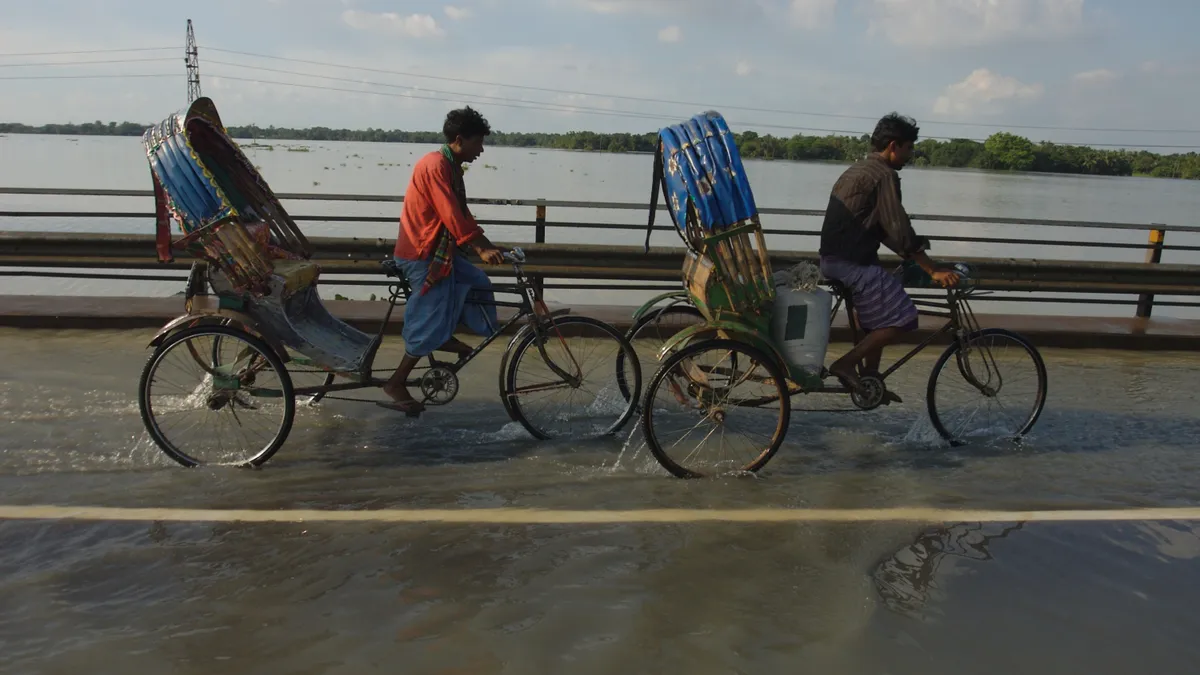Dive Brief:
- Increased flooding and extreme heat could impact global apparel exporters, resulting in a 22% decline in export earnings by 2030, according to recent reports from Cornell University’s Global Labor Institute and Schroders.
- The reports examine projected earnings and employment impacts in 2030 and 2050. Under the forecasted scenarios, Bangladesh, Cambodia, Pakistan and Vietnam, which represent 18% of global apparel exporters, could risk losing $65 billion in export earnings and nearly 1 million new jobs in 2030 due to slower growth related to widespread climate vulnerability.
- Those numbers are expected to increase by 2050, per the report, with earnings dropping 68.8% — in a non-climate adaptive scenario — and 8.64 million fewer jobs.
Dive Insight:
The reports analyzed climate vulnerability from extreme heat and flooding and physical risk measures in 32 apparel and footwear production centers and tracked extreme heat and flooding predictions.
“The climate vulnerabilities of workers, manufacturers and of fashion’s substantial output in tropical and subtropical centers are measurable, and our (and others’) projections show them growing,” the report states. “They are cutting deeply into export earnings, employment and worker health. Without rapid adaptation, these falloffs in earnings and jobs will compound.”
Report authors argue that while the fashion industry’s climate change focus is often on increasing the use of recycled fabrics and cutting water uses and greenhouse gas emissions, these solutions don’t address the climate breakdown for workers, communities and industries producing the garments.
Many of the production centers analyzed in the report are located in “tropical and subtropical hotspots,” with projected exposures to extreme heat and humidity.
The high share of export earnings in Bangladesh, Cambodia and Pakistan make these countries vulnerable to changes in future earnings and employment in the apparel production sector, the report stated.
The report also studied six brands to determine how brands and suppliers are impacted by heat and flooding. It found that there could be a meaningful productivity loss in brands’ supply chains because of climate change.
“Climate-related risk is potentially likely to be added to decisions between suppliers when brands are making their selection,” the report stated. “In other words, when evaluating potential new suppliers, it is conceivable that brands will begin (if not already doing so) to consider price, certainty, volume and physical risk exposure or adaptation preparedness. This increases the emphasis for investors on responsible sourcing practices.”













